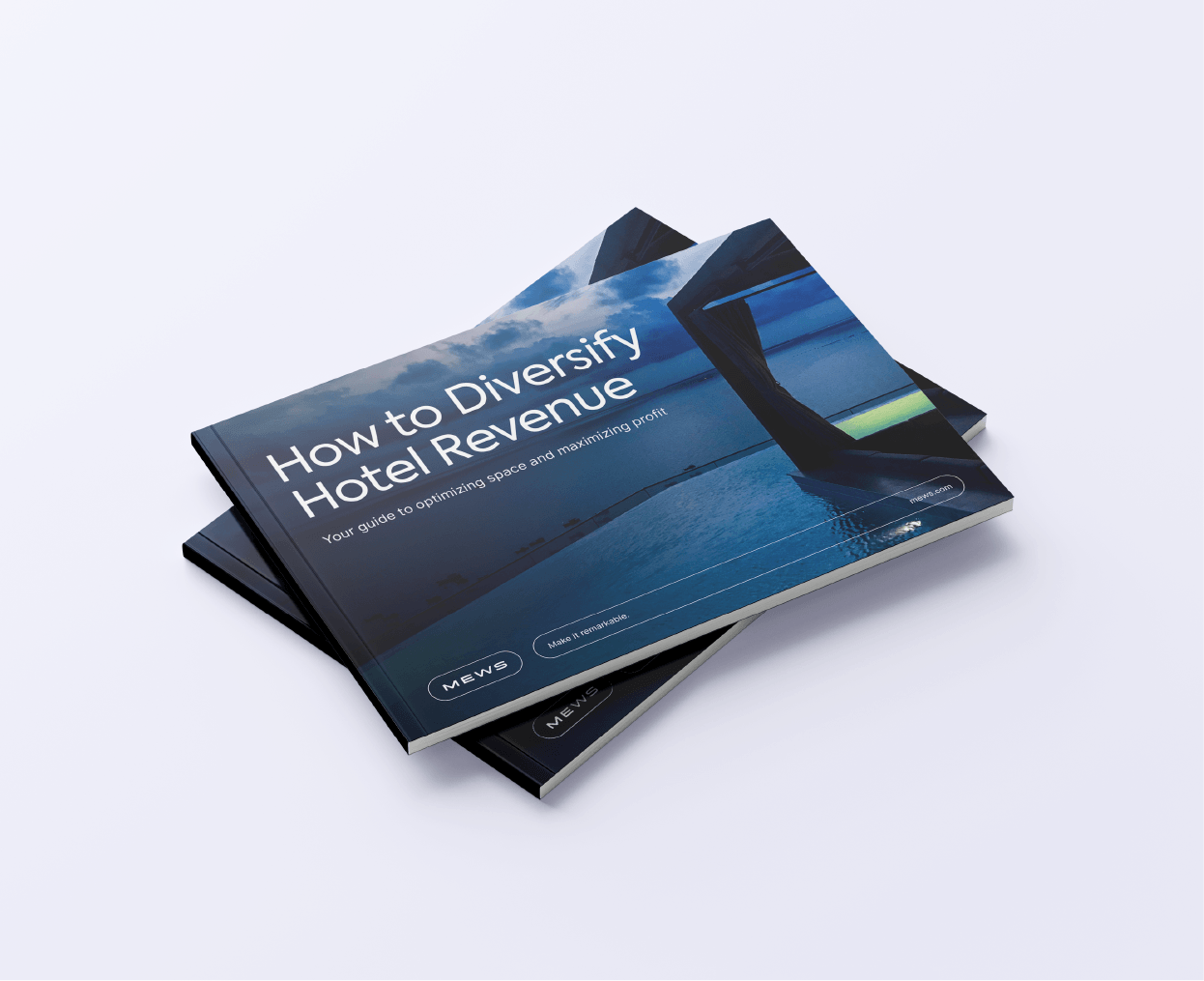Have you ever heard of a SWOT analysis for hotels? SWOT stands for Strengths, Weaknesses, Opportunities and Threats, and it's a type of analysis businesses can use to determine where their strengths and weaknesses lie internally, and compare the opportunities and threats posed externally by the competition. It's a great way for hotels to strategize, make important decisions and plan for the future.
We’ll look in more detail at what is a SWOT analysis, how it works and some different hotel industry examples. The more thorough your hotel is in conducting this analysis, the more chances you have of determining weaknesses and threats, so that you can overcome your shortcomings and thrive in the face of the competition.
Table of contents
What is SWOT analysis for hotels?
A SWOT analysis is a methodology first developed at Stanford University in the 1960s. It is used in marketing to analyze the success of the different marketing strategies and individual campaigns, or on an organizational level to understand how the business is performing. It's a way of analyzing external and internal factors to make strategic decisions.
In the case of the hotel industry, hoteliers might perform this type of analysis to understand if it's worth investing in a certain advertising campaign, to mitigate the effects of a negative review, or to better analyze any type of business decision, such as choosing the right software in order to help boost your hotel's bottom line.
How does SWOT analysis work?
In order to better strategize and create a plan of action identifying the opportunities for growth and mitigating your hotel's pitfalls, it's important to use the SWOT matrix to get an idea of your hotel's strengths and weaknesses, so you can understand how your hotel is operating internally in order to understand threats from the competition and where your opportunities for growth lie.
So where should you start? Start by going internally to identify what your hotel is doing well and where there is room for improvement.
Identify your hotel's strengths
When we talk about strengths, you should consider both your hotel's concrete competitive advantages like great service, your five-star hotel restaurant, amenities or your hotel's location, and things like your online reputation and guest retention levels.
Determine your hotel's weaknesses
When we talk about weaknesses, it's important to be critical, and think of what is preventing your hotel from being the best hotel it can be. Maybe you have a hard time retaining staff, maybe you have high operating costs and limited profit, or maybe you have bad reviews. Assess what these shortcomings are, so you can design a series of solutions.
After you've determined your hotel's strengths and weaknesses, it's time to analyze external factors. You can do this by creating a benchmark of the competition to understand what threats they pose and where they aren't delivering so that your hotel can fill in the gaps with its services and unique value proposition.
Define your opportunities
This is the moment in the SWOT analysis where you want to see where the competition is falling short and what you can do to offer better service, get more bookings, have happier guests or generate more profit. Benchmarking will help you to understand what the competition is doing and uncover industry trends so that you can get ideas of how to target new markets and unlock new ways of generating revenue.
Pinpoint your threats
Once you've determined where your opportunities lie, it's important to understand what stands in your way of reaching those goals or new markets. Or there may be a new kid on the block who has a similar offering as your property; think about what you can do to stand out, so you don't lose business to the competition.
The idea is to mitigate the effects of these threats by detecting them on time, and to capitalize on the opportunities you determine, while finding the way to turn your weaknesses into strengths.
You may also like:
- What is the metaverse and how does it affect the hotel industry?
- Best ideas to make your hotel eco-friendly
- What is glamping?
Different examples of SWOT analysis in the hotel industry
Now that we've understood the practice of carrying out a SWOT analysis, let's take a look at some practical examples.
A new glampsite
Imagine you've just started a new glamping business and you're trying to figure out the best way to attract new customers. Where would you start?
Read more about getting ready for the glamping boom.
Start by identifying your business's strengths:
- Unique value proposition
- Incomparable location
- Top amenities
- Excellent service
Now it's time to determine your weaknesses:
- Bad reviews
- High prices
Now let's look at the market trends to determine your opportunities:
- Glamping is a niche travel type that is growing immensely in popularity
- There is no site like it anywhere nearby
- Targeting travelers looking for unique and personalized experience
And finally, it's time to analyze your threats:
- People think of it as a seasonal travel style
- There's a nearby campsite that has some upscale bungalows offered at a lower price
- It's a new sector of the market that still has some boundaries to general market acceptance
Eco-resort
What are your business's strengths?
- Sustainability
- Eco-friendly amenities
- Great add-on services like nature tours, night tours, star gazing, canoe rides, and more, which drive incremental revenue
- Knowledgeable staff and nature guides
What are your weaknesses?
- The surrounding environment (i.e. bugs and environmental conditions like mud, animals, etc.)
- Remote location makes it difficult to find staff
- Must provide lodging for staff
- Difficult to arrive
What are your opportunities?
- Specialized target audience who is less price-sensitive
- More add-on services; due to remote location, you can internalize all services
- Possibility of catering to luxury audience
What are your threats:
- Long rainy season makes it perceived as a seasonal resort
- There are other ecolodges on the market who have been around longer and have more brand recognition
- Hard to retain guests. The ecolodge attracts a niche audience who visit the lodge once and has no need to repeat.
Conclusion
In this article we've looked at what is a SWOT analysis in the hotel industry, how it works and some different examples. The key to carrying out this type of analysis is to evaluate your hotel's performance critically, while doing benchmarking to understand your hotel's market share, identify weaknesses and threats, so that you can help your brand withstand any pressure from new competition.
At the same time, a SWOT analysis helps you to better prioritize and allocate resources where necessary in order to have a more efficient and profitable operation. With a carefully prepared SWOT analysis, and an efficient hotel management system, you can better unlock opportunities for revenue management and be sure that your hotel is prepared for any obstacles that arise. After all, resilience is the way to success, and understanding your shortcomings is essential to keep delivering the best guest experience time after time.
Looking for more opportunities to diversify – and grow – your revenue?
Download our guide "How to Diversify Hotel Revenue"


2026 Hospitality Industry Outlook
Download now
Table of contents
Hospitality hot takes straight to your inbox



.webp)
